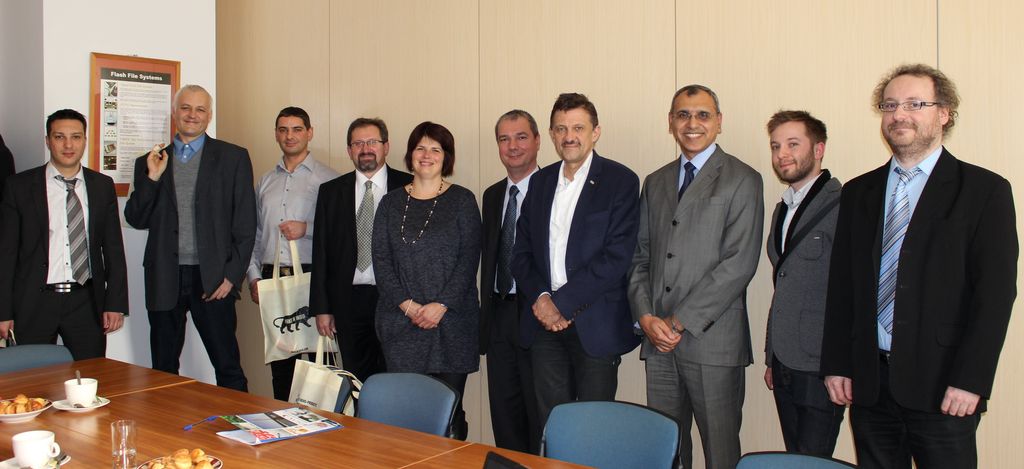
Web application against unnecessary C-section operations
2016-12-19
Career opportunities at R&R Software
2017-02-28Embassy of India visiting in Szeged

Mr. Vijay Khanduja, First Secretary of the Indian Embassy of Budapest, Hungary, was received at the Software Innovation Pole Cluster at the University of Szeged.
As a result of the joint venture of software industry innovation companies and technology transfer organizations, the Software Innovation Pole Cluster has been formed with 19 members on 21st of September 2007, building on the cooperation with the industrial partner of the University of Szeged and the operation of the e-Szeged consortium.
The Cluster intends to contribute to the development of university education and the efficient and conscientious use of the resources and competences of small and medium-sized enterprises representing the software industry, so that the IT industry in the South Great Plain Region and Szeged is a significant factor in the local economy.
R&R Software – as a decisive software company in Hungary – is a member of the Software Innovation Pole Cluster since 2009; and in 2012, it also opened a local branch office in Szeged. In the recent years, R&R Software has participated in several research and development projects with other member organizations of the Cluster.
On the 17th of January 2017, First Secretary of the Indian Embassy of Budapest, Hungary, Mr. Vijay Khanduja visited Szeged to meet with the members of the Cluster, and the IT solutions and competencies they offer.
Mr. Vijay Khanduja, First Secretary of the Indian Embassy in Budapest, Hungary (third person from right) with the representatives of the Software Innovation Pole Cluster member organizations
R&R Software Co. Ltd. presented the SMART ENERGY VISION Cloud-based energy management system, which had been developed jointly with Future Energy Ltd. The system uses M2M and IoT devices, and is capable of real-time measurement and monitoring of green energy productoin, as well as power and piped utility consumption – providing a stable basis for financial controlling, and ISO 50001 compliance.
With SMART ENERGY VISION, it is possible to reach up to 10-25 percent energy savings, while detecting catastrophe situations and breakdowns early – preventing further losses, and higher repair costs.
